λ Ivon Hitchens (British 1893-1979) Wittenham Clumps from Day's Lock Oil on canvas Signed (lower left); further signed, titled and dated 1956 (on artist's label to stretcher) 41 x 87cm (16 x 34¼ in.) Provenance: Acquired directly from the artist in 1957 Thence by descent to present owner Synonymous for his panoramic depictions of the English countryside, Ivon Hitchens learnt his trade at the Royal Academy Schools before setting up a studio in north London in 1919. The subsequent two decades saw the evolution of Hitchens' style from an accomplished but essentially traditional representational approach to a much more personal and emotive pictorial language. The influence of contemporary French painters such as Paul Cezanne, Georges Braque and Andre Lhote, as well as friendships with confirmed modernists like Claude Flight exposed Hitchens to new and exciting ways of seeing. An invitation to stay with Ben and Winifred Nicholson at their house in Cumberland in 1925 led to a productive exchange of ideas at a time when all three were at a critical juncture in their artistic development. The paintings that Hitchens completed during this time have often been seen as the first in which his personal style begins to manifest itself. These years were, however, a financial struggle for Hitchens who, lacking any significant patronage, had to be content with only selling a handful of works each year. The one constant was his membership of the Seven and Five Society. With its first exhibition in 1920, the group was initially made up of a haphazard variety of artists, but Hitchens' suggestion that Ben Nicholson join the group in 1925, galvanised it into a more single-minded movement with a nascent modernist aesthetic. Over the coming years the group attracted many of the most innovative artists of the period including Christopher Wood David Jones Frances Hodgkins and Barbara Hepworth; and Hitchens' circle in north London grew to include further likeminded artists and intellectuals such as Henry Moore Paul Nash Adrian Stokes, David Bomberg Walter Gropius and Herbert Read. In 1940, the Hitchens family which now consisted of his wife Mollie whom he had married in 1935 and their young son, John, born in April of the same year, were forced to retreat from London after his Hampstead studio and home was bombed. The couple had been spending increasing time in Sussex and the previous year had acquired an area of woodland near Lavington Common, along with a large caravan purchased from a Miss Williams of Heyshott for £20. This move to Sussex transformed Hitchens' painting and he spent the next forty years depicting the surrounding landscape. By the time of the present work, Wittenham Clumps from Day's Lock, executed in 1956, Hitchens had established himself as one of the foremost painters of the day, with financial security from a now longstanding relationship with Leicester Galleries and critical acclaim from several museum exhibitions. In the same year, he was chosen to represent Britain at the XXVII Venice Biennale. Whilst his work had been exhibited abroad, the Biennale offered an unrivalled opportunity for twenty canvasses to be shown, showcasing his work to a much wider international audience. The works were well received and, following the show, the British Council was invited by several European galleries, to send them on tour, garnering yet more exposure for Hitchens' work. Wittenham Clumps from Day's Lock is a superb example of Hitchens' use of colour to create form. The typical sage green interspersed with greys, whites and violets draw the viewer over the water to the landscape beyond. The intersecting lines of the foreground contrasting with the curve of the hills in the distance creating a sense of balance and harmony. The work was acquired in 1957 as a wedding present directly from Hitchens' studio and has remained in the same family ever since. The family have retained not only the original correspondence with Ivon Hitchens setting
λ Ivon Hitchens (British 1893-1979) Wittenham Clumps from Day's Lock Oil on canvas Signed (lower left); further signed, titled and dated 1956 (on artist's label to stretcher) 41 x 87cm (16 x 34¼ in.) Provenance: Acquired directly from the artist in 1957 Thence by descent to present owner Synonymous for his panoramic depictions of the English countryside, Ivon Hitchens learnt his trade at the Royal Academy Schools before setting up a studio in north London in 1919. The subsequent two decades saw the evolution of Hitchens' style from an accomplished but essentially traditional representational approach to a much more personal and emotive pictorial language. The influence of contemporary French painters such as Paul Cezanne, Georges Braque and Andre Lhote, as well as friendships with confirmed modernists like Claude Flight exposed Hitchens to new and exciting ways of seeing. An invitation to stay with Ben and Winifred Nicholson at their house in Cumberland in 1925 led to a productive exchange of ideas at a time when all three were at a critical juncture in their artistic development. The paintings that Hitchens completed during this time have often been seen as the first in which his personal style begins to manifest itself. These years were, however, a financial struggle for Hitchens who, lacking any significant patronage, had to be content with only selling a handful of works each year. The one constant was his membership of the Seven and Five Society. With its first exhibition in 1920, the group was initially made up of a haphazard variety of artists, but Hitchens' suggestion that Ben Nicholson join the group in 1925, galvanised it into a more single-minded movement with a nascent modernist aesthetic. Over the coming years the group attracted many of the most innovative artists of the period including Christopher Wood David Jones Frances Hodgkins and Barbara Hepworth; and Hitchens' circle in north London grew to include further likeminded artists and intellectuals such as Henry Moore Paul Nash Adrian Stokes, David Bomberg Walter Gropius and Herbert Read. In 1940, the Hitchens family which now consisted of his wife Mollie whom he had married in 1935 and their young son, John, born in April of the same year, were forced to retreat from London after his Hampstead studio and home was bombed. The couple had been spending increasing time in Sussex and the previous year had acquired an area of woodland near Lavington Common, along with a large caravan purchased from a Miss Williams of Heyshott for £20. This move to Sussex transformed Hitchens' painting and he spent the next forty years depicting the surrounding landscape. By the time of the present work, Wittenham Clumps from Day's Lock, executed in 1956, Hitchens had established himself as one of the foremost painters of the day, with financial security from a now longstanding relationship with Leicester Galleries and critical acclaim from several museum exhibitions. In the same year, he was chosen to represent Britain at the XXVII Venice Biennale. Whilst his work had been exhibited abroad, the Biennale offered an unrivalled opportunity for twenty canvasses to be shown, showcasing his work to a much wider international audience. The works were well received and, following the show, the British Council was invited by several European galleries, to send them on tour, garnering yet more exposure for Hitchens' work. Wittenham Clumps from Day's Lock is a superb example of Hitchens' use of colour to create form. The typical sage green interspersed with greys, whites and violets draw the viewer over the water to the landscape beyond. The intersecting lines of the foreground contrasting with the curve of the hills in the distance creating a sense of balance and harmony. The work was acquired in 1957 as a wedding present directly from Hitchens' studio and has remained in the same family ever since. The family have retained not only the original correspondence with Ivon Hitchens setting
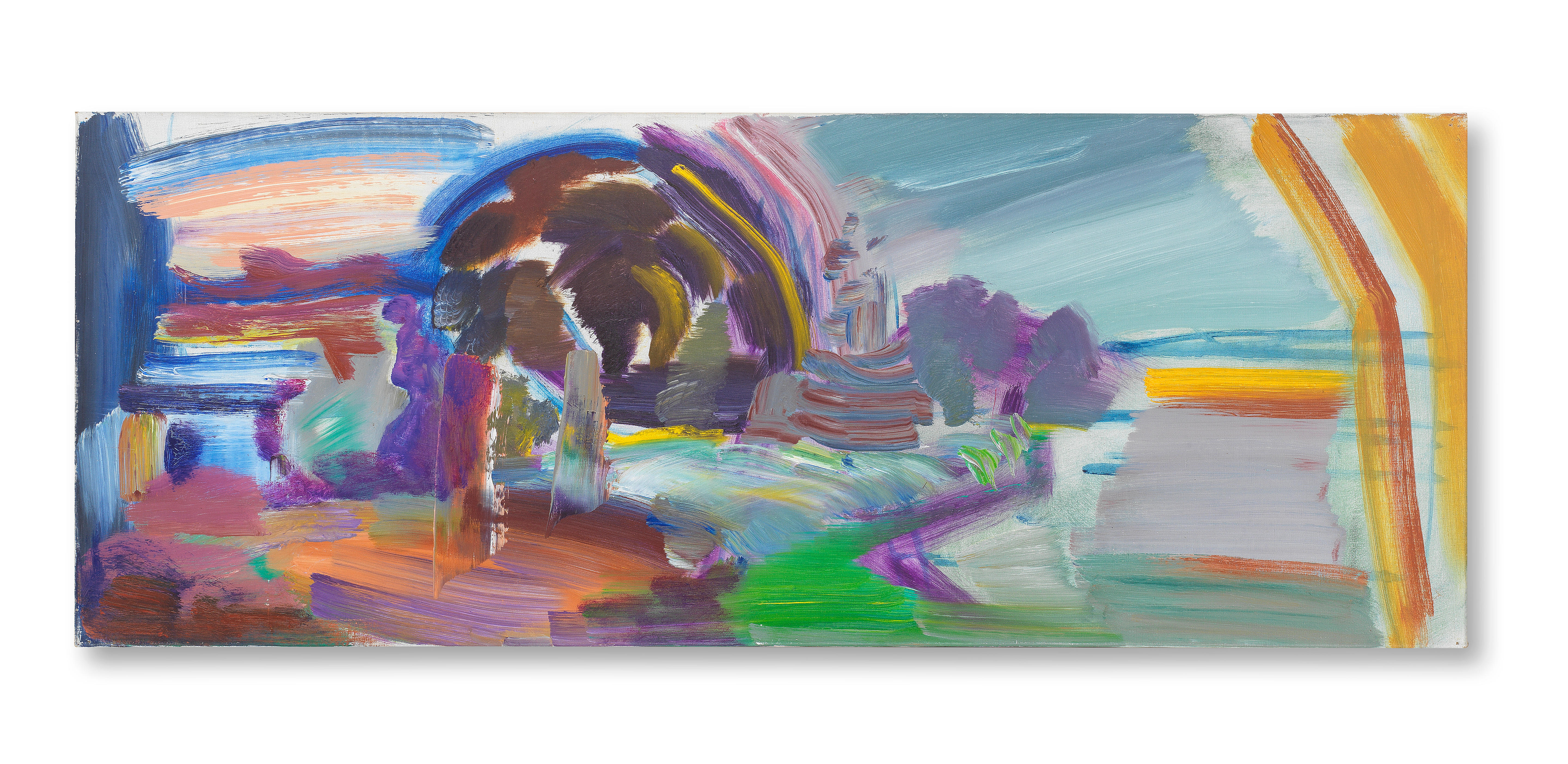

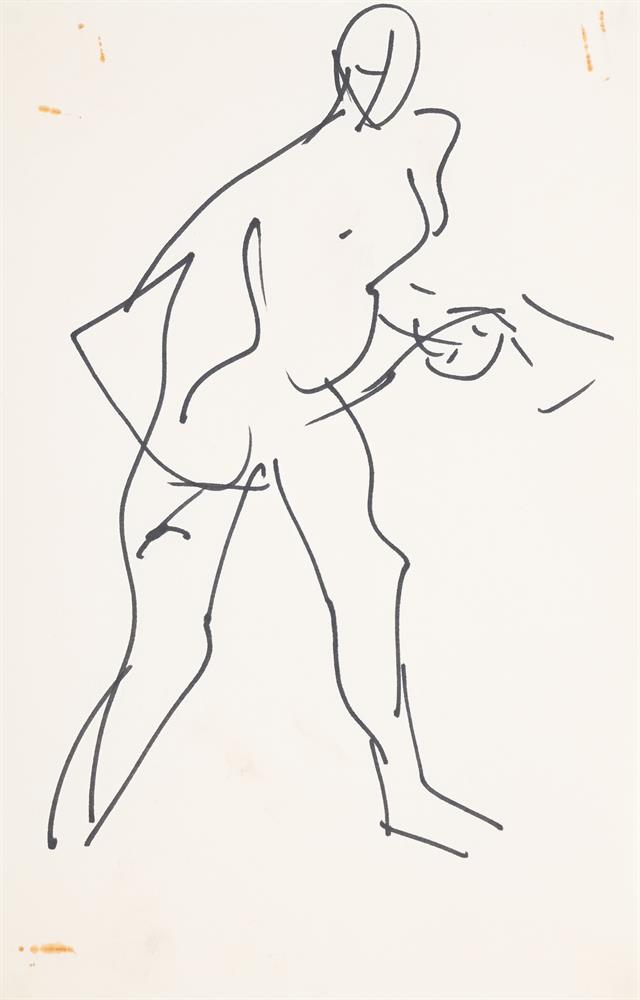
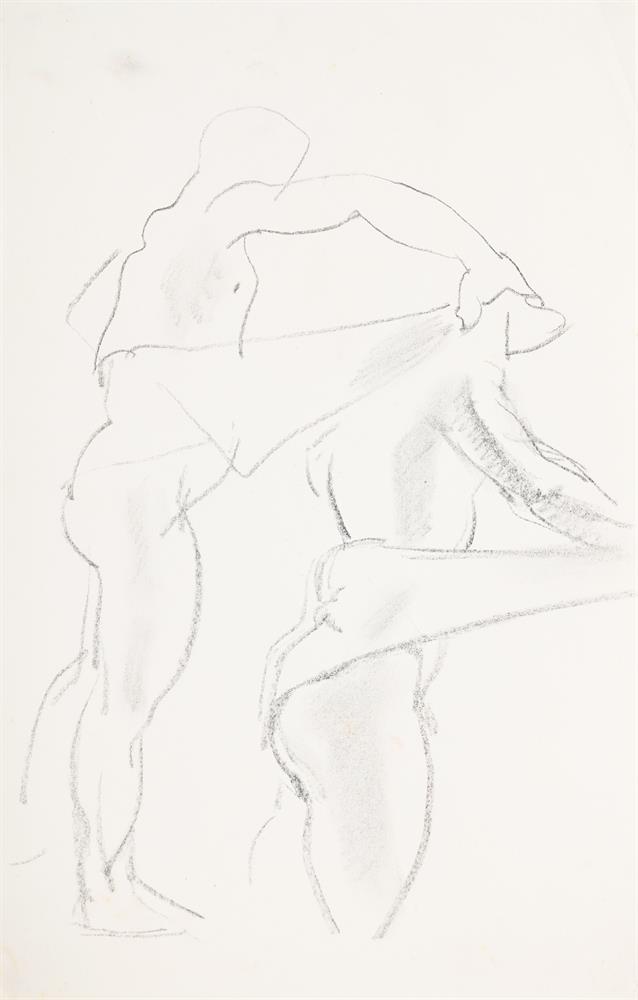

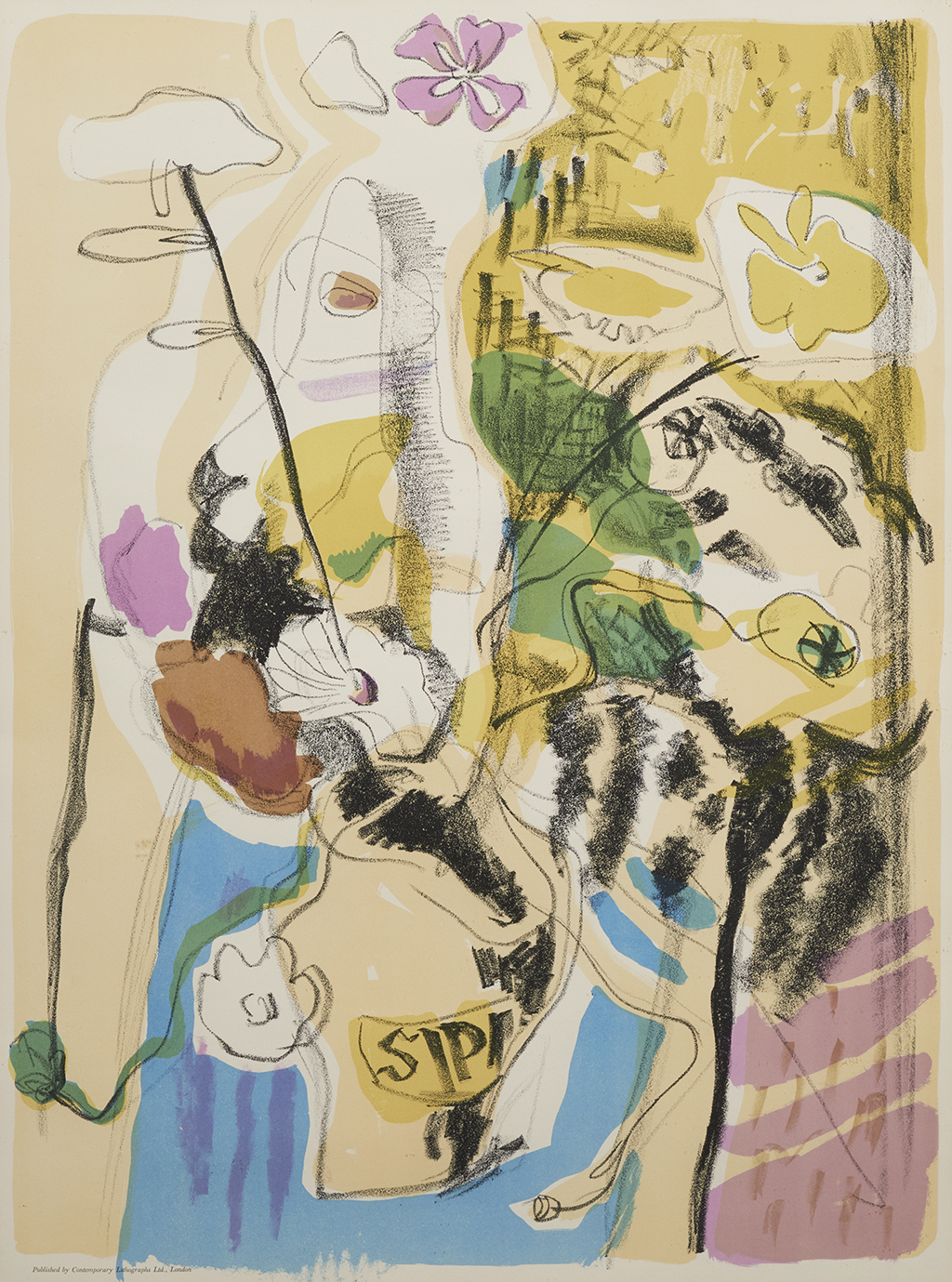
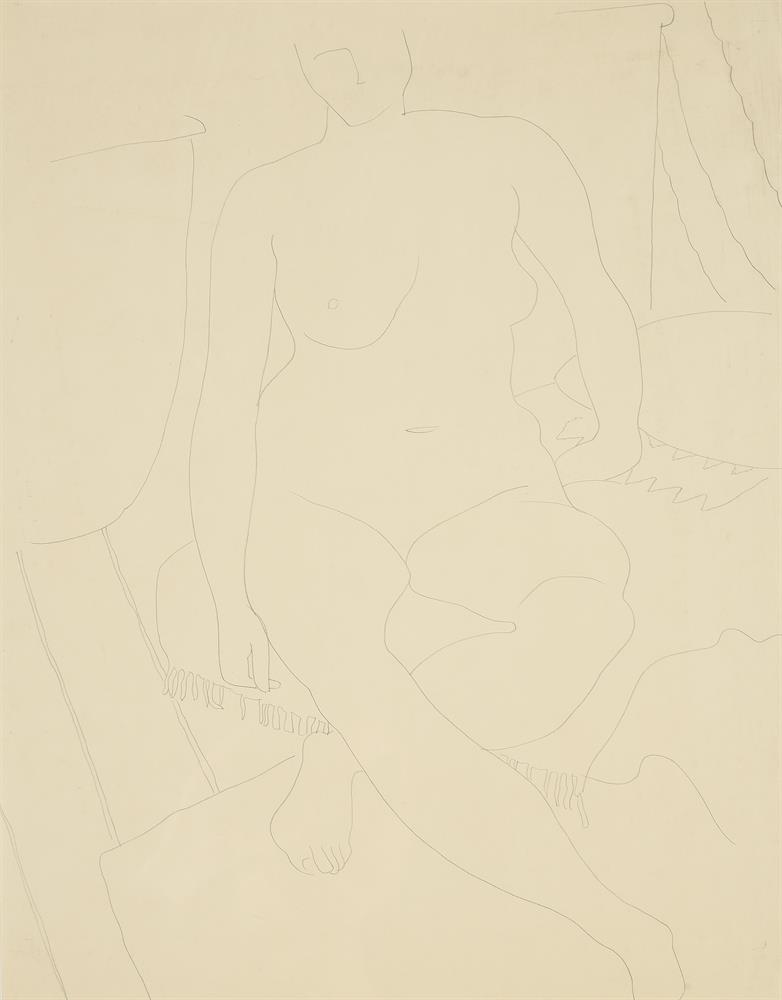
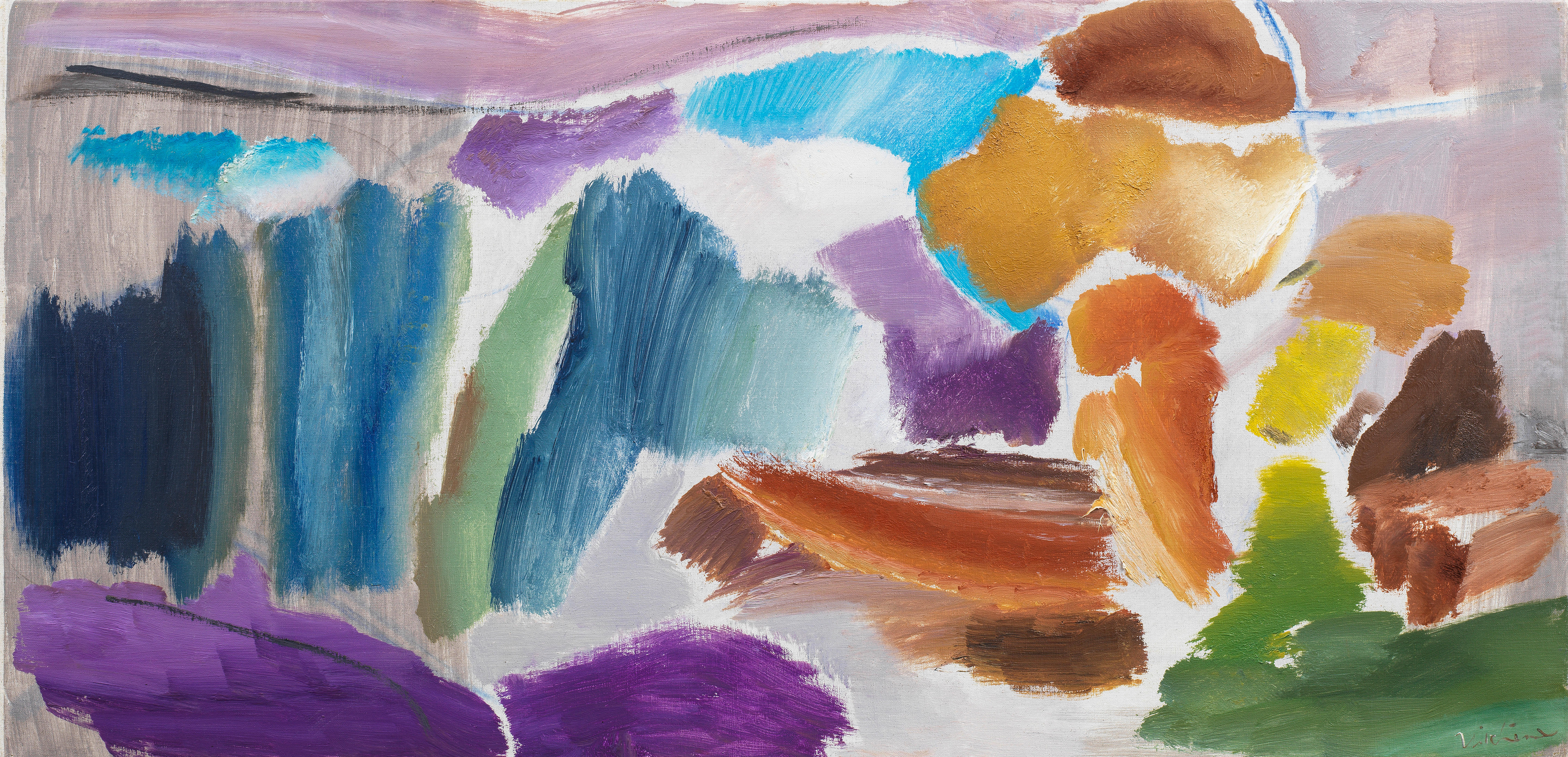

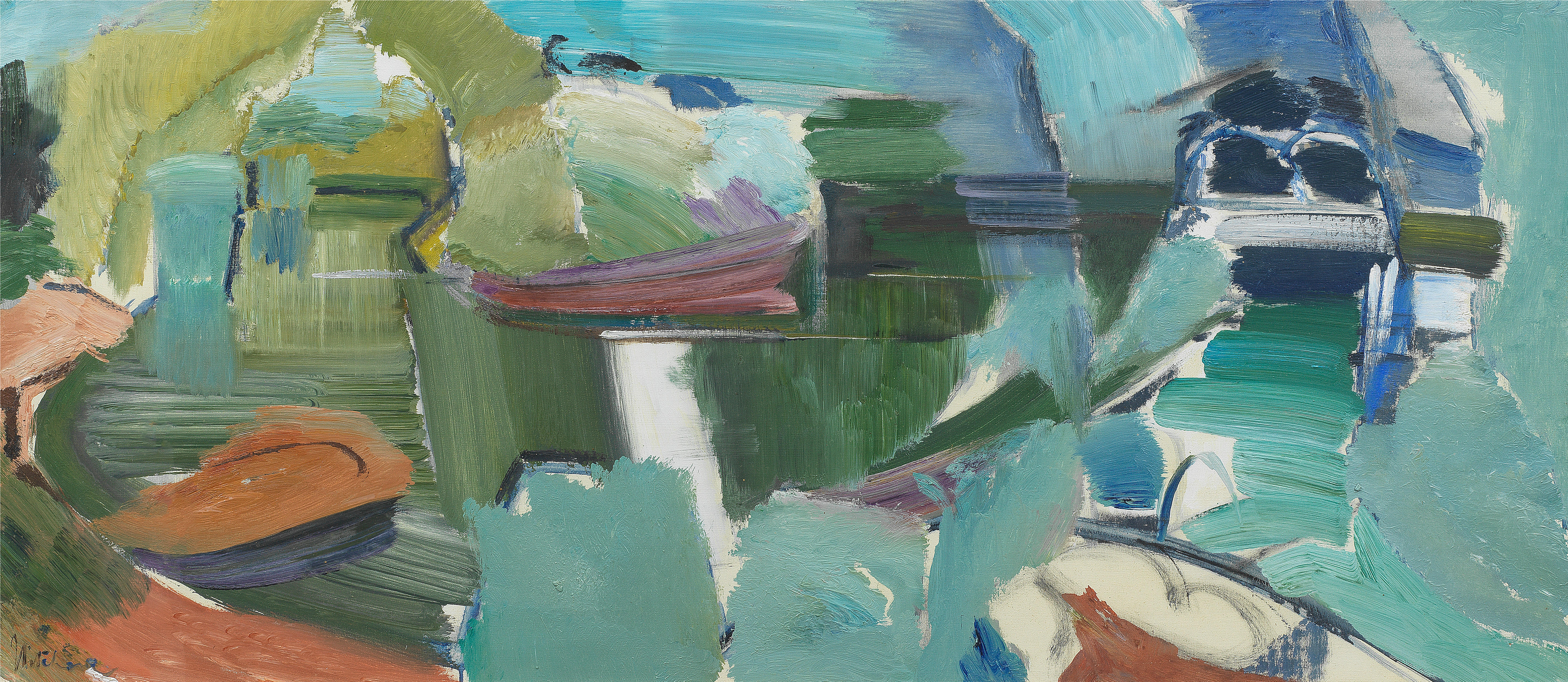
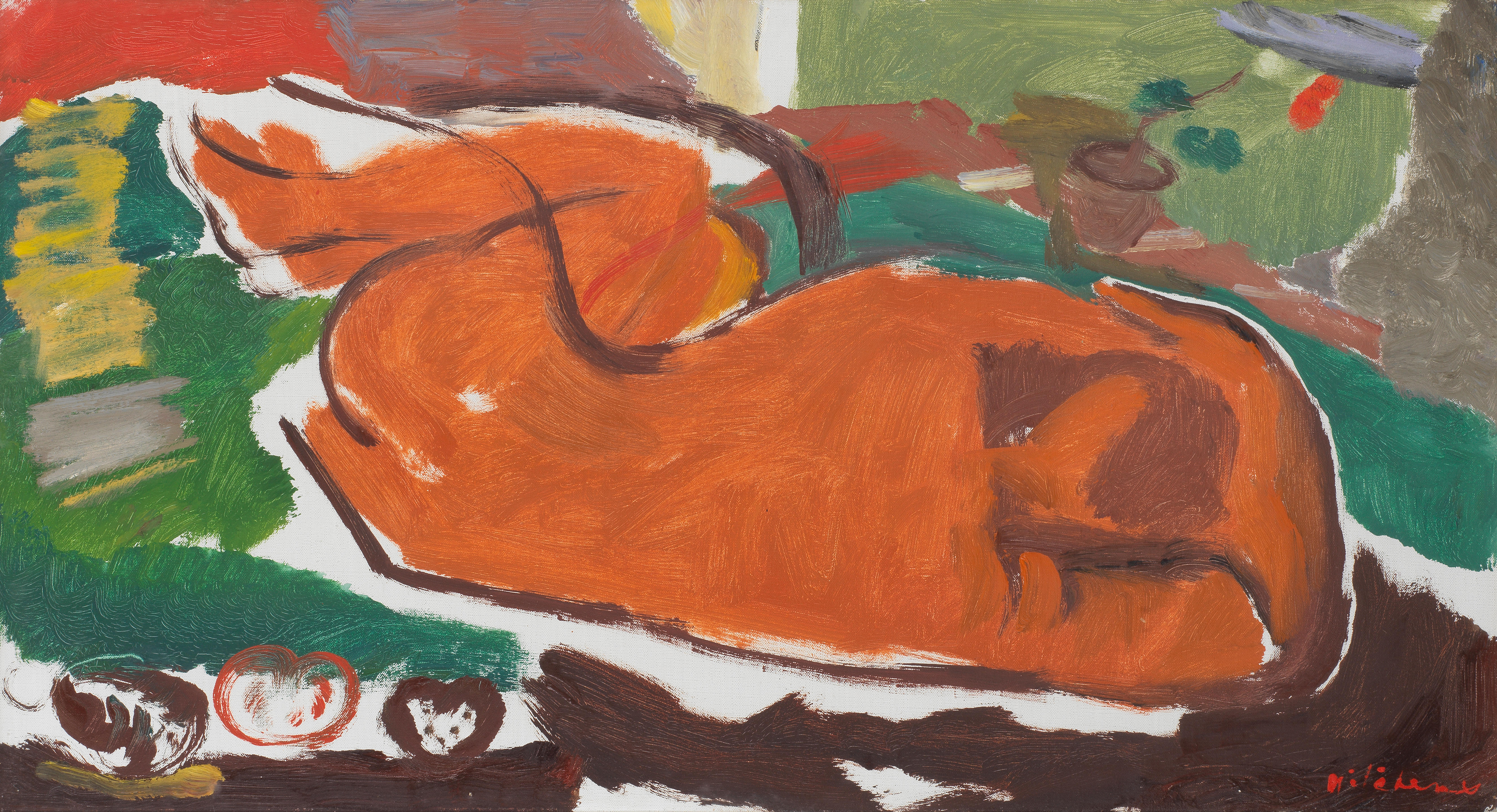
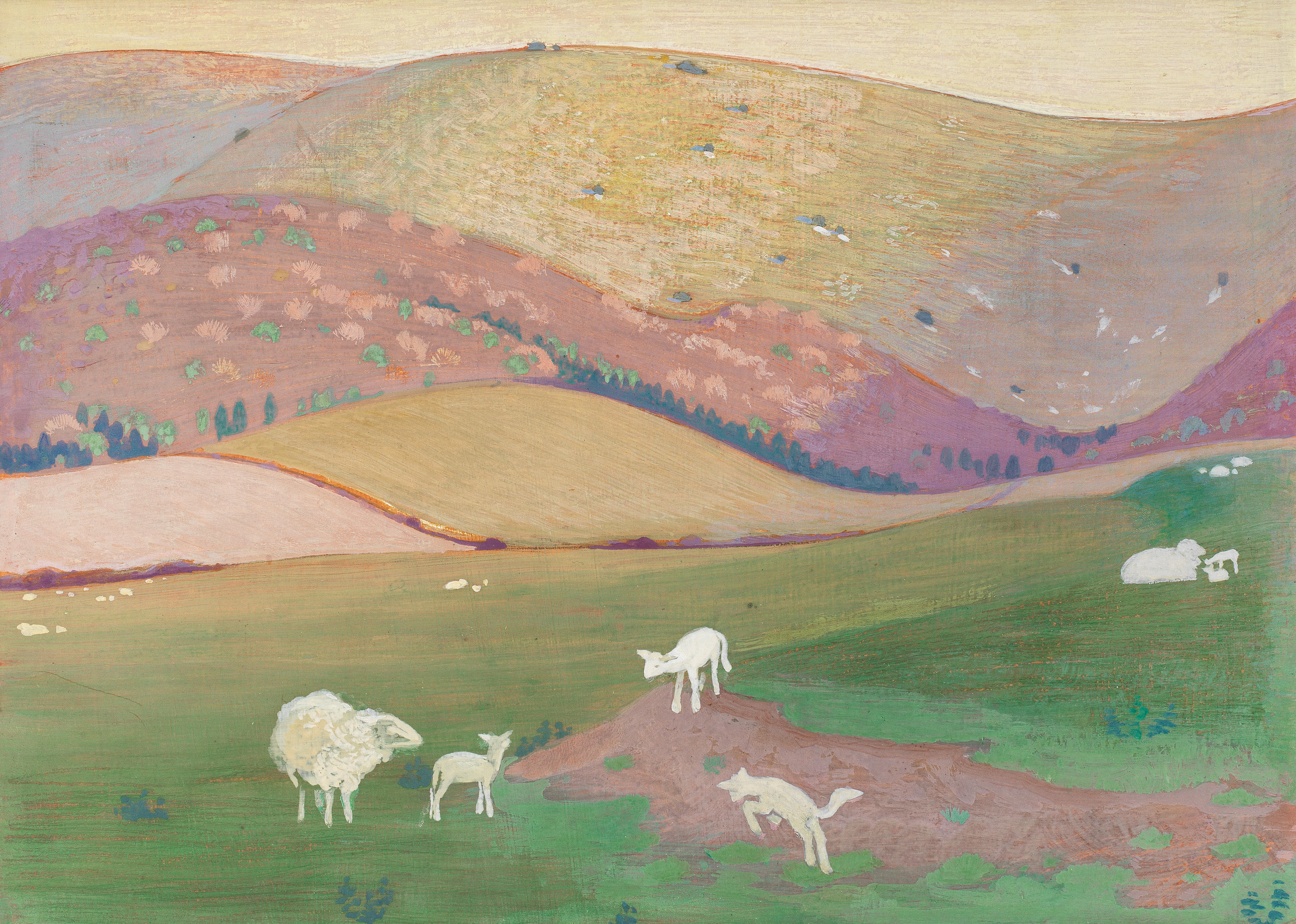
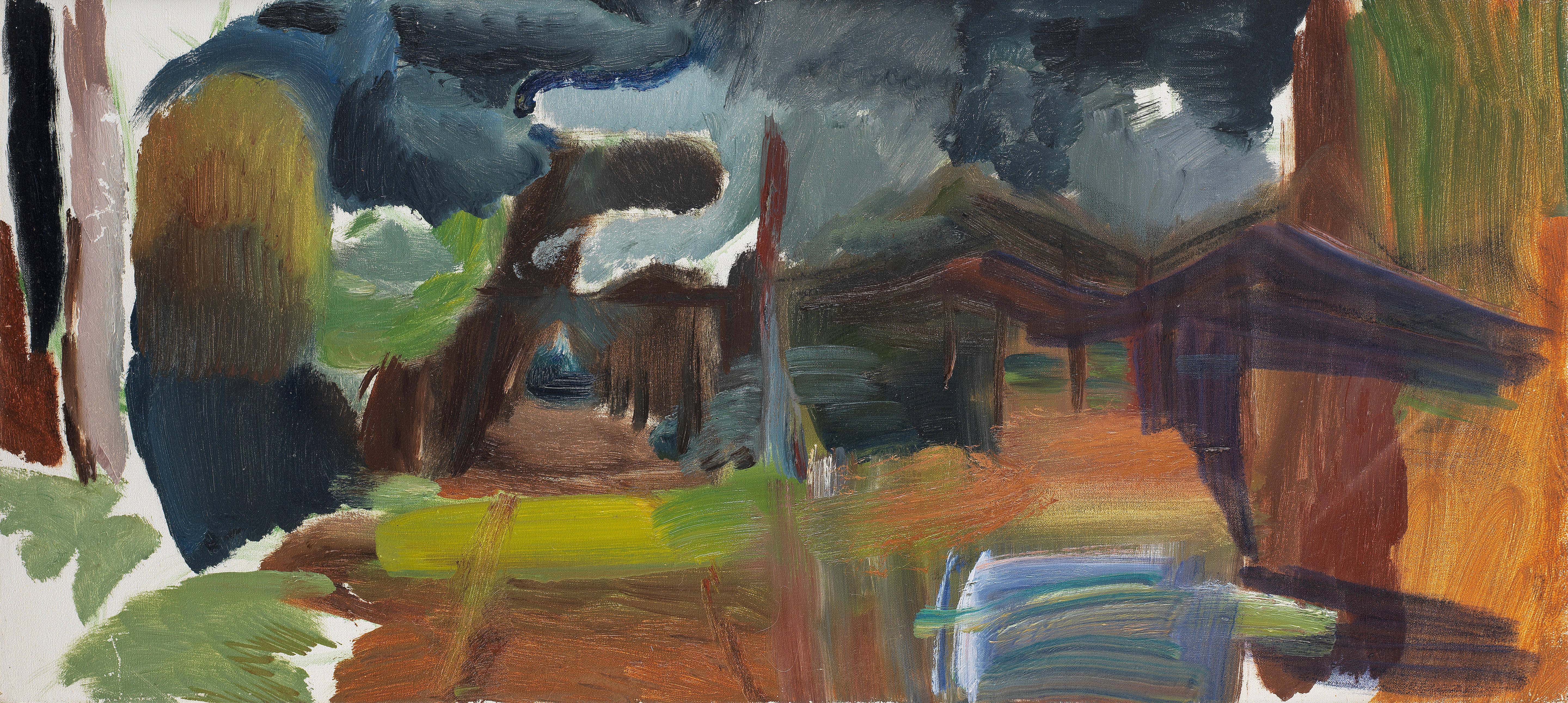
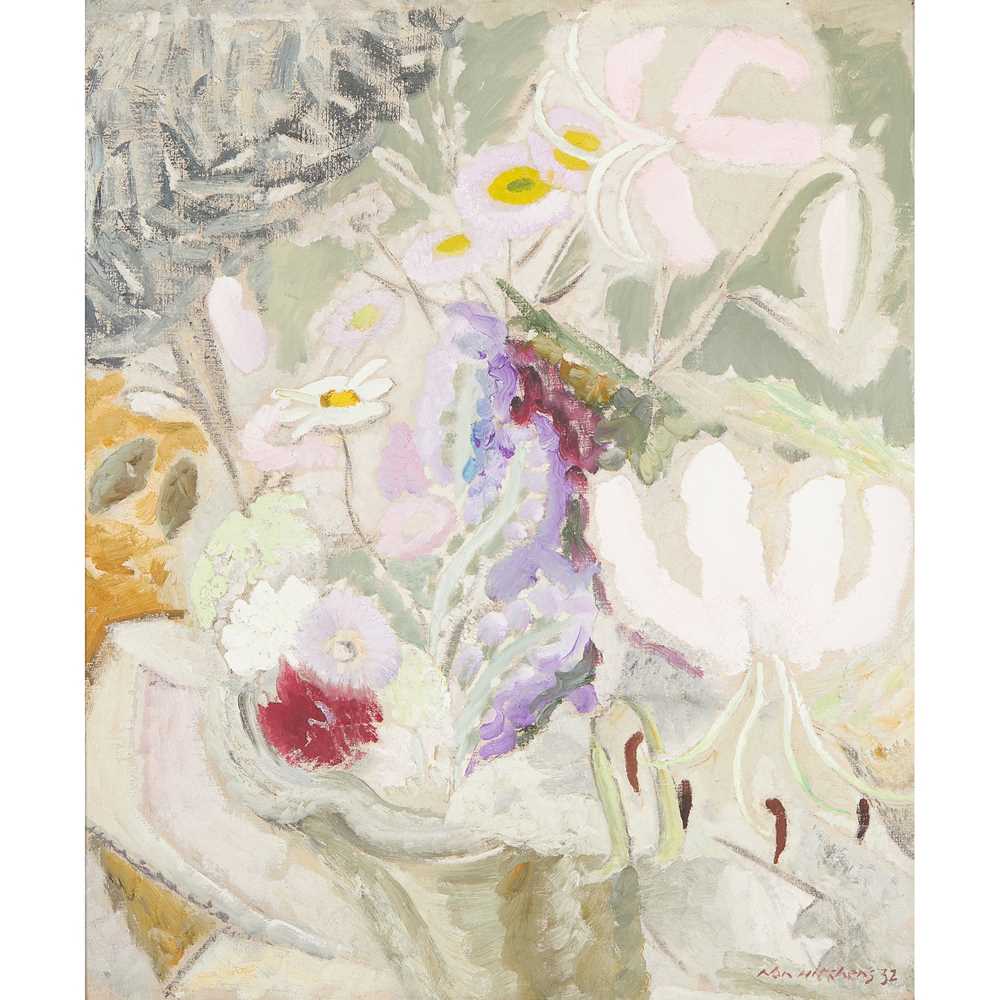
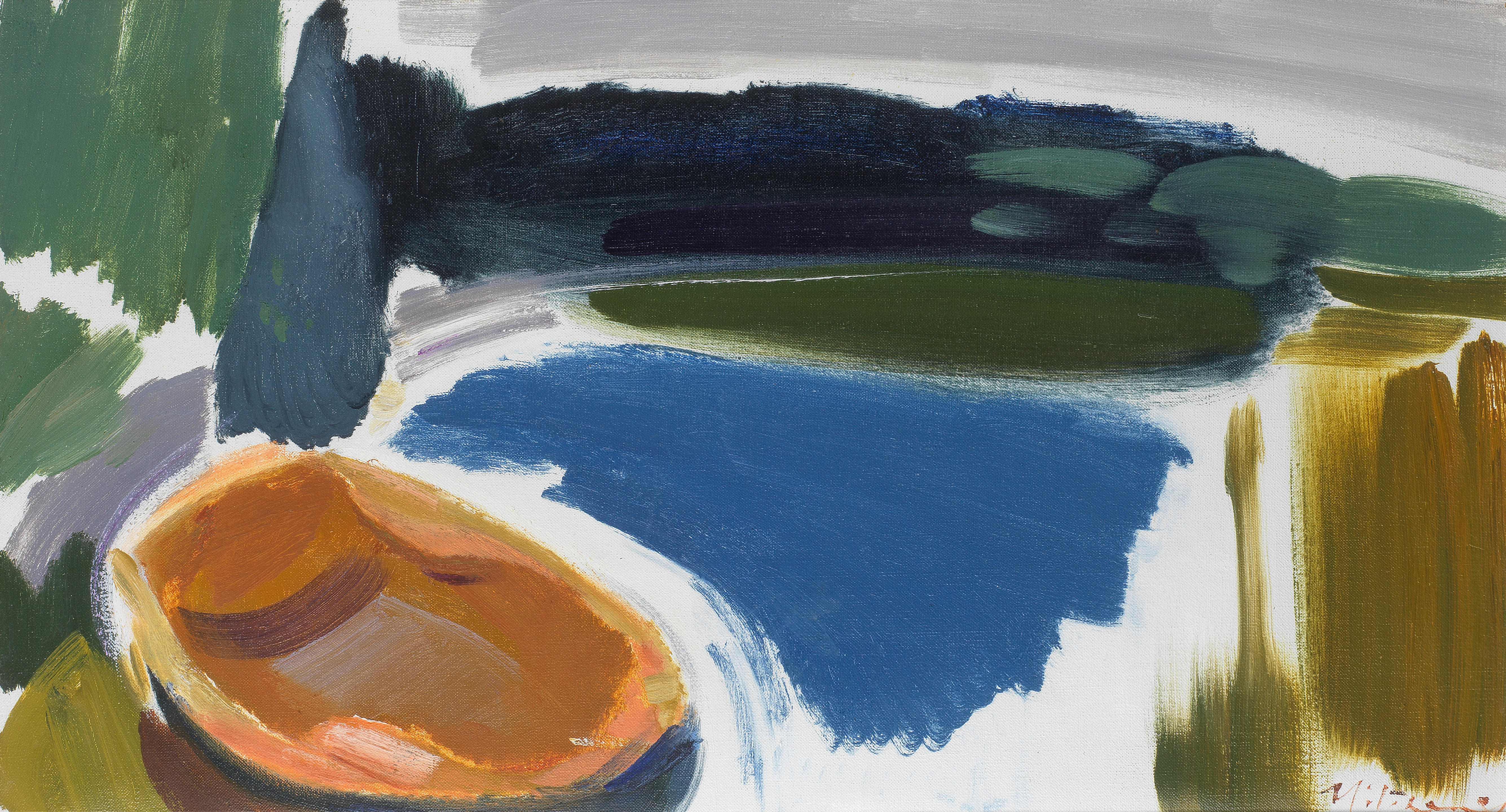
Testen Sie LotSearch und seine Premium-Features 7 Tage - ohne Kosten!
Lassen Sie sich automatisch über neue Objekte in kommenden Auktionen benachrichtigen.
Suchauftrag anlegen